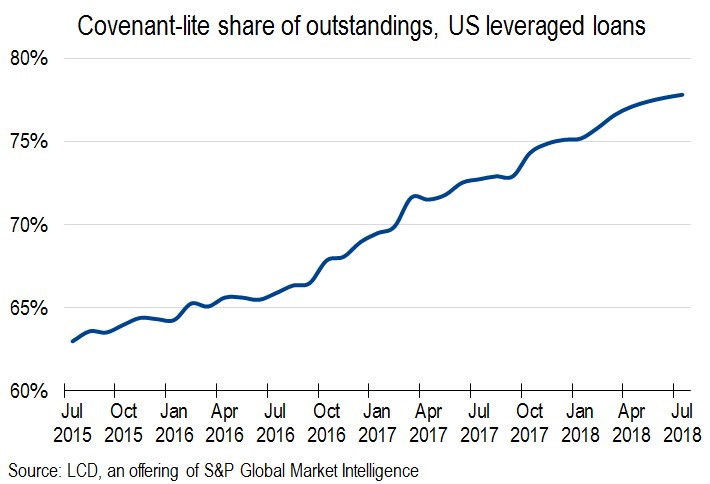Financial markets have been booming over recent years and investor confidence is high. In fact, this current bull market, which started in 2009 after the recession, has made American history. In this bull market, we have seen the longest course of uninterrupted gains. A key reason that we have witnessed a record bull market is due to the actions of the Federal Reserve (Fed). The Fed has artificially kept interest rates low in the United States for an extended period of time. Access to lower interest rate debt has
fueled demand from borrowers, and investors chasing yield have been forced to look to the fixed income markets increasing demand and pushing up the prices of bonds / fixed income instruments.
The correlation between bond price and yield is inverted, therefore the higher bond prices decrease the yield of these investments. Historically, the average yield for “junk bonds”, which compensate for higher credit risk, has been in the double digits. There is usually a sizable spread between the yields on investment grade rated bonds and riskier junk bonds. Recently, these spreads have narrowed considerably into unchartered territory. Currently, the yield for junk bonds is close to 6%, which is significantly less than historical yields. This illustrates a disproportionate market demand, where investors are now paying, but not receiving, the appropriate risk adjusted compensation.
Predicated on history, today’s low interest rates are unsustainable, meaning billions of dollars will be lost if the market corrects itself. Many investors, funds and the like are now vulnerable to experience a significant loss as bonds that were bought during high confidence seasons fall substantially in price. Furthermore, defaults are likely to increase as there are many companies that are spending exponentially more than they are earning. Bond issuers can default or file for bankruptcy, despite the existing contractual obligation to repay the loan. Market optimism overlooks the ability of these companies to repay their debt and if they default, investors are at risk of losing a significant portion, if not all of their investment.
Consequently, university endowments, pension funds, mutual funds, and hedge funds are increasing investments outside of the bond market and into alternative investment vehicles, especially income producing real estate. Real Estate Investment Trusts (REITs) such as Agree Realty, Four Corners Property Trust and NADG NNN, target service industry tenants in strong real estate trade areas, proving themselves as strong alternative investments with similar yields and significantly lower risks when compared with high yield debt today.
Real estate funds can offer investors a safer alternative and superior risk-adjusted return. REITS that focus on well located, income producing properties provide investors with an investment underpinned by hard, valuable real estate. For example, NADG NNN focuses exclusively on one of the most secure asset classes in the market: out-parcel pads. Out-parcel pads are located in front of shopping centers, in high traffic trade areas that are leased long-term to household name service providers. These leases feature contractual rental increases that hedge against inflation and the value of the underlying real estate historically increases over time. Such a strategy helps protects investors from the loss of principal, while benefiting from dividend yielding investments that can provide meaningful tax shields through depreciation.
| Figure 2: Source: LCD, S&P Global Market Intelligence |
Another factor that makes now a great time to consider alternative investments to the fixed income / bond market is the increasing trend of covenant-lite loans (cov-lite loans). Usually, loans are set up with contracts that have specific covenants to protect the lenders. Cov-lite loans have fewer or none of these covenants in place, increasing the risk of default. These covenants act as indicators and early warning signs to investors regarding the company’s ability to fulfill its debt repayment duties. Defaults now have a higher chance of going unnoticed. Isn’t this risk worth more than a 6% yield.?
Defaults are not uncommon when it comes to riskier bonds and what we are seeing is an increase of risk across the bond market. The default rate among B-rated issuers (the second lowest) was 4.28%. For the lowest tier, CCC/C, the default rate was 26.85%. Compare these default rates to that of REITs, which are close to zero and currently provide similar yields. Bond investments can provide more liquidity, however, the security of holding income producing real estate, subject to long-term lease covenants, makes certain REITS well situated to outperform fixed income / the bond market in the coming years.
About the author:
Alexis Schomer is a serial entrepreneur with a passion for solving problems through innovation. Alexis has been recognized for her passion and hard work as a business owner by the City of Santa Barbara, the Camarillo City Council, the California State Legislature, and the US Congress; and was awarded the Emerging Business Award by the Spirit of Entrepreneurship Foundation. She is a frequent contributor to publications across various sectors especially finance and real estate. She is a frequent speaker at educational and motivational events. Born and raised in Los Angeles, she graduated from California Lutheran University, Thousand Oaks, where she co-founded her first tech start-up.




